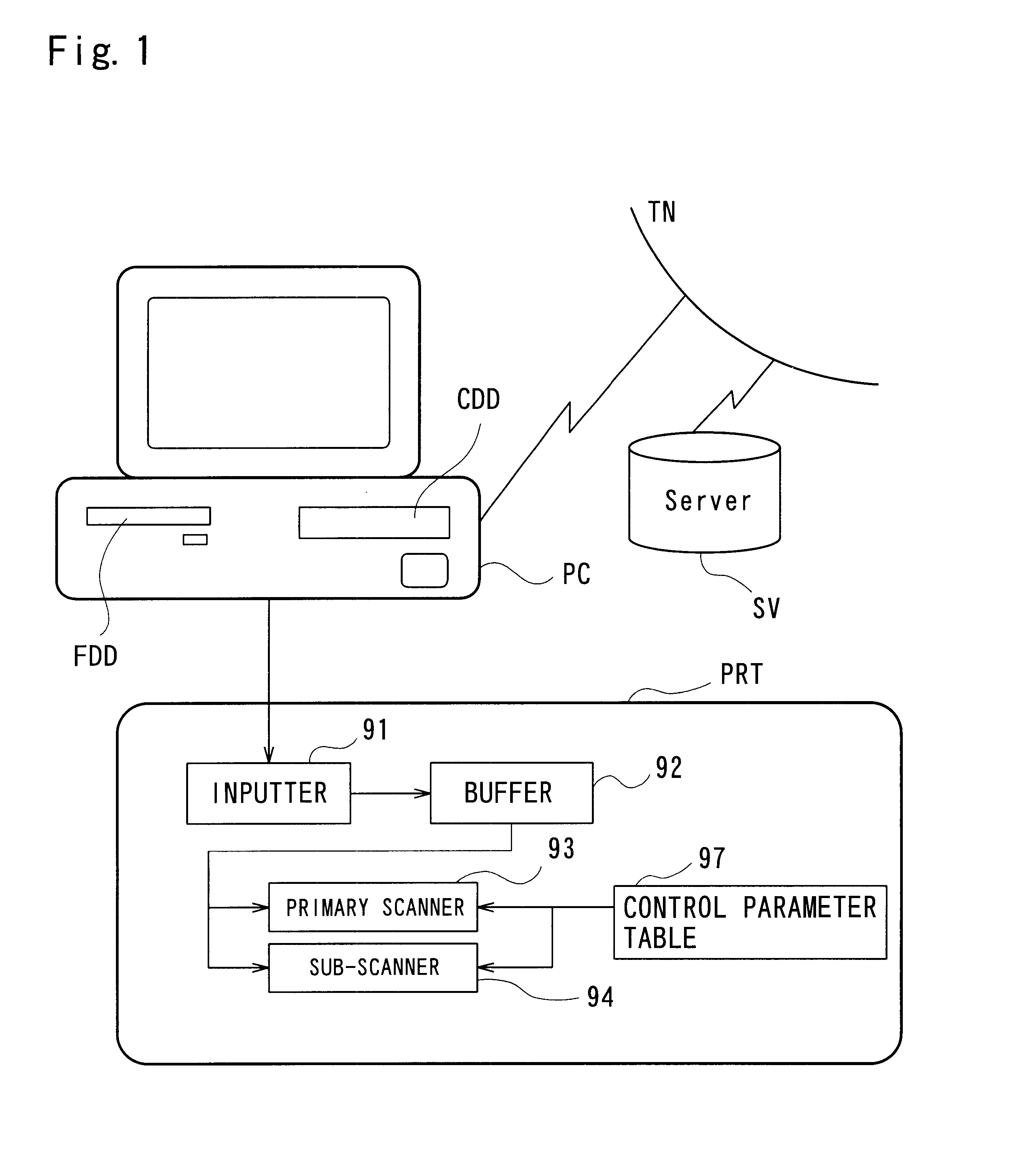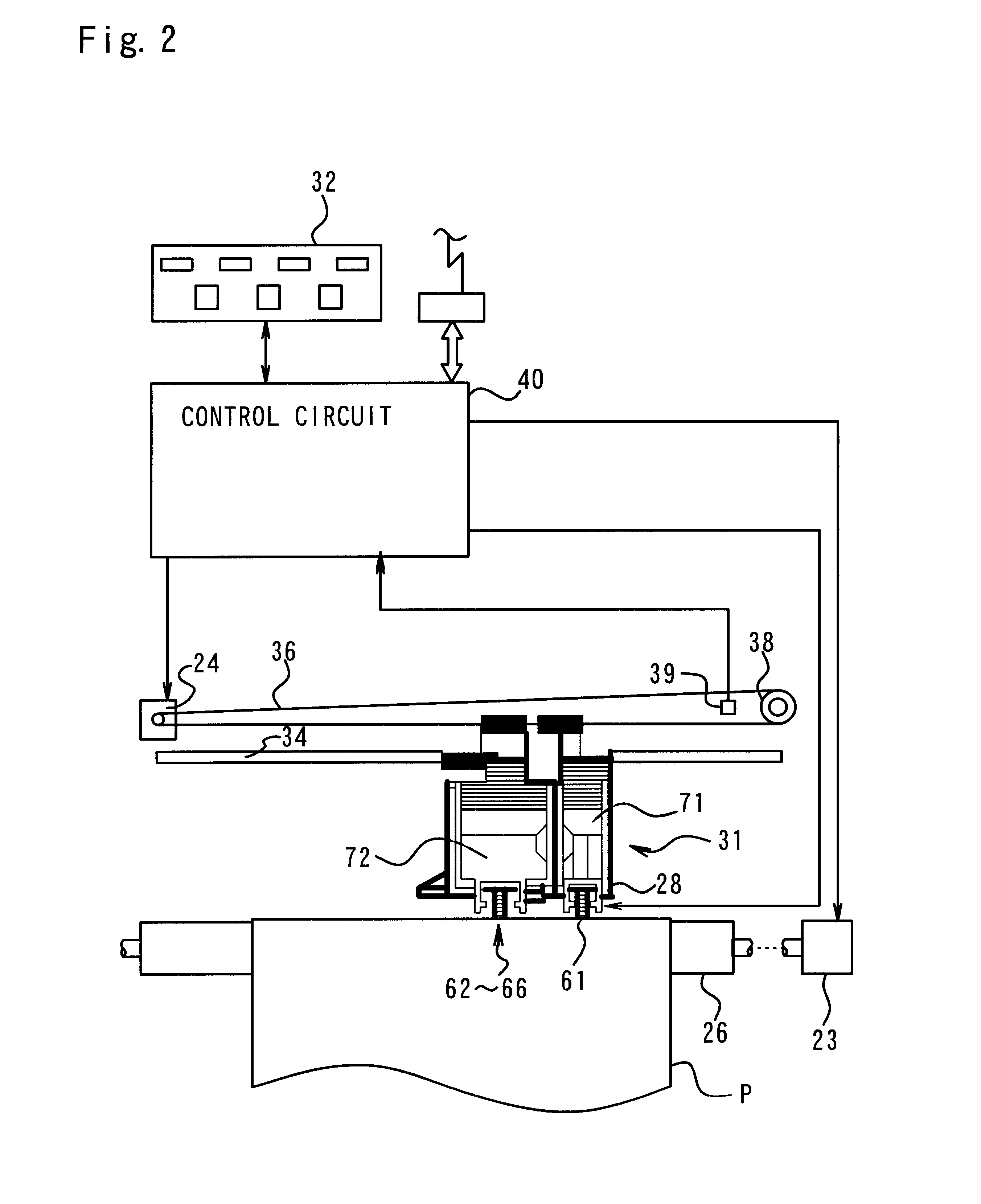Printing device
a printing device and printing plate technology, applied in printing, spacing mechanisms, printing mechanisms, etc., can solve the problems of loss of image quality, and shifts in the positions where the dots are formed
- Summary
- Abstract
- Description
- Claims
- Application Information
AI Technical Summary
Problems solved by technology
Method used
Image
Examples
example 2
(3) Example 2
A second example of a printing device is described below. The hardware structure of the printing device in Example 2 is the same as that in Example 1. The flow chart of the dot forming routine is also the same as that in Example 1. The control parameter table and its separate uses in Example 2 are different from those in Example 1.
FIG. 11 illustrates an example of the control parameter table for Example 2. Here, only the sub-scan feed for natural image printing mode is shown. The feed corresponds to a case of 96 nozzles at a pitch of 4 dots. As shown in the figure, sub-scanning in Example 2 is performed at different feeds according to the resolution during printing.
Auxiliary scanning is performed at a constant feed of 47-dot segments when the printing mode has a low resolution, that is, a resolution of 360 DPI (dots per inch) in the primary scanning direction and a resolution of 720 DPI in the sub-scanning direction. FIG. 12 illustrates the appearance of the dots formed...
PUM
 Login to View More
Login to View More Abstract
Description
Claims
Application Information
 Login to View More
Login to View More - R&D
- Intellectual Property
- Life Sciences
- Materials
- Tech Scout
- Unparalleled Data Quality
- Higher Quality Content
- 60% Fewer Hallucinations
Browse by: Latest US Patents, China's latest patents, Technical Efficacy Thesaurus, Application Domain, Technology Topic, Popular Technical Reports.
© 2025 PatSnap. All rights reserved.Legal|Privacy policy|Modern Slavery Act Transparency Statement|Sitemap|About US| Contact US: help@patsnap.com



